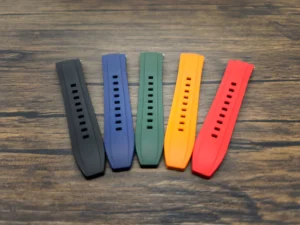The Emotional Journey of Communication: Challenges and Triumphs in Pediatric Therapy
Communication is at the heart of human connection. For many families, watching a child struggle with speech, language, or motor planning can be both heart-wrenching and inspiring. This mix of emotions—heartache and joy—is part of the complex journey that families embark on when seeking support through pediatric therapy.
Every child develops at their own pace. However, when milestones are delayed or regressions occur, parents may feel a sense of helplessness. It’s not uncommon for children with speech or physical delays to face additional hurdles in expressing their needs, socializing with peers, or even performing basic tasks like feeding or walking. The good news is that pediatric physical therapy and speech-language therapy offer hope and a path forward.
Understanding Communication Challenges in Children
Communication challenges can stem from a variety of causes—developmental disorders like autism spectrum disorder (ASD), neurological conditions, birth injuries, or even undiagnosed hearing impairments. Some children may be non-verbal, while others struggle with articulation, fluency, or receptive language.
These challenges don’t exist in isolation. They often affect a child’s confidence, emotional development, and academic performance. That’s where early intervention through pediatric therapy becomes critical. A comprehensive approach, involving speech-language pathologists and pediatric physical therapists, can help unlock a child’s potential.
The Role of Pediatric Therapy in Overcoming Barriers
Pediatric therapy is not a one-size-fits-all solution. It is tailored to meet the unique needs of each child. Therapy sessions often include play-based activities, movement strategies, sensory integration, and caregiver training. All of these elements work together to strengthen a child’s ability to communicate and move independently.
For children with motor planning or coordination difficulties, pediatric physical therapy is a cornerstone of treatment. Pediatric physical therapists assess muscle tone, balance, strength, and coordination to create custom exercise programs. These professionals work closely with children to improve functional mobility, whether that means learning to crawl, walk, or maintain posture while speaking.
The intersection of movement and communication is significant. Improved motor skills often support better breath control, body awareness, and posture—all crucial elements for successful speech production. That’s why a multidisciplinary team approach is so effective in addressing communication issues.
Stories of Hope: Progress and Breakthroughs
Parents often describe the therapy journey as a rollercoaster of emotions. Initial assessments can be overwhelming, especially when faced with clinical terminology or uncertain prognoses. Yet, over time, many families experience profound moments of progress.
Take the story of Liam, a 4-year-old with delayed speech and low muscle tone. Through weekly sessions combining speech-language therapy and pediatric physical therapy, Liam learned to use gestures, followed by simple words. Eventually, he developed short sentences and could express his needs clearly. His physical strength and coordination also improved, allowing him to participate more confidently in preschool activities.
These moments are victories not just for the child, but for the entire family. Each new word spoken, each step taken, is a testament to resilience and the power of expert care.
Supporting Families Every Step of the Way
Pediatric therapists understand that supporting the family is just as important as working with the child. Parents are encouraged to take part in sessions, ask questions, and learn exercises they can do at home. The journey doesn’t end when the session is over—it continues in everyday routines, at home, in the park, or during bedtime stories.
Resources, education, and consistent communication from therapy teams empower families to become active participants in their child’s development. Many clinics also offer group sessions, parent workshops, and online tools to extend support beyond the therapy room.
Looking Ahead: Building Stronger Futures
While the challenges of communication delays can be daunting, the outcomes can be life-changing with early, consistent intervention. Thanks to dedicated professionals in pediatric therapy and pediatric physical therapy, children who once struggled to speak or move freely can achieve independence, confidence, and connection.
If your child is facing communication challenges, know that you’re not alone. A team of compassionate experts is ready to walk alongside you, celebrate the victories, and support every step of the journey.











